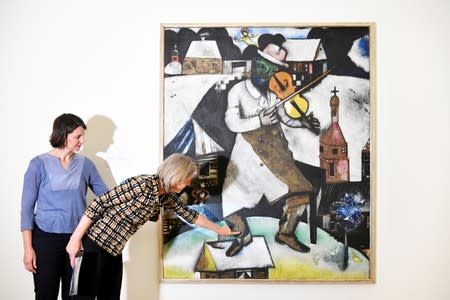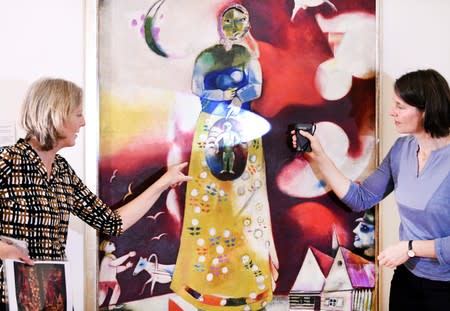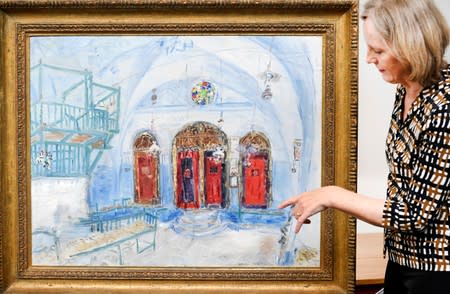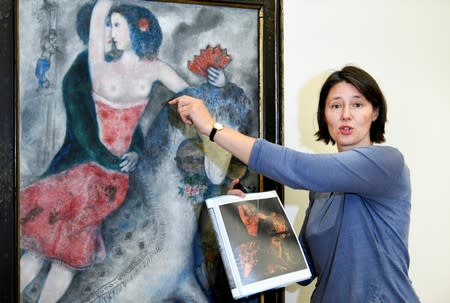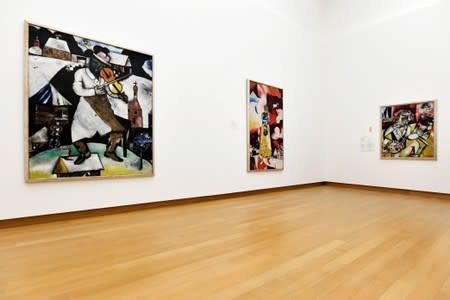Chagall's famed 'Fiddler' painted on a tablecloth: researchers
By Toby Sterling
AMSTERDAM (Reuters) - Marc Chagall, the 20th century French-Russian artist who delighted fans with his vividly coloured, whimsical works, did many of his paintings using the same nine pigments - and hardly ever used black, researchers said on Friday.
He was also so poor early on that his famed 1912 work "Fiddler" - a picture of a violinist dancing on a rooftop - was painted on a tablecloth when Chagall was a struggling Jewish immigrant in Paris.
The checkered pattern of the cloth is clearly visible in parts of the painting where the paint is thin, they said.
"He had so little money that he bought canvases from flea markets, you know he painted on any canvas he got his hands on," said Meta Chavannes, a conservator at Amsterdam's Stedelijk Museum. "So a bed sheet, or a night shirt, even a tablecloth."
The discoveries were made by researchers who spent five years studying the museum's large collection of works by Chagall.
The Stedelijk, or city museum, houses modern and contemporary art and will put 38 Chagall works on display this month, together with other pieces by immigrant artists in Paris who changed modern art, including Picasso and Mondrian.
Co-conservator Madeleine Bisschoff said it was typical of Chagall's work that much of his focus - the contrasting colours that give his paintings vibrancy - was concentrated in one or two key areas of a painting with intense detail, while other parts were sparse or even bare.
Scans showed those central parts - such as the woman and child in the 1913 "Pregnant Woman" - usually remained unchanged as Chagall worked. Details at the edges such as cows, houses and faces, had been tinkered with, moved or redone.
Chagall, who was born in 1887 in a village in what is now Belarus, left for Paris in 1910, weathered World War I in Russia, returned to Paris and then fled World War II for New York in the 1940s, before returning to France and working until his death in 1985.
Throughout his long career, he overlapped with Impressionists, Cubists, Supremacists, Surrealists and many other schools along the way, but he retained his own whimsical style. Often described as dreamlike, his paintings featured recurring themes including his wife, memories from his childhood such as cows, donkeys and milkmaids, and scenes of Jewish life.
Until now, his work had not been as widely researched by art historians as bigger names of the 20th century. The full findings of the research done by the team at the Stedelijk will be published in a German academic journal next month.
(Reporting by Toby Sterling; Editing by Susan Fenton)
